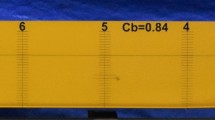Abstract
Circular motion test data and uncertainty analysis results of investigations of the hydrodynamic characteristics of ship maneuvering are presented. The model ships used were a container ship and two tankers, and the measured items were the surge and sway forces, yaw moment, propeller thrust, rudder normal and tangential forces, pitch and roll angles, and heave. The test parameters were the oblique angle and yaw rate for the conditions of a hull with a rudder and propeller in which the rudder angle was set to zero and the propeller speed was set to the model self-propulsion conditions. Carriage data showing the accuracy of the towing conditions in the circular motion test are also presented. It was confirmed that the uncertainties in the hydrodynamic forces such as the surge and sway forces, yaw moment, rudder tangential and normal forces, and propeller thrust were fairly small. The reported uncertainty analysis results of the circular motion test data may be beneficial in validating data quality and in discussing reliability for simulation of ship maneuvering performance.















Similar content being viewed by others
Notes
The use of these standards does not reflect the current state of the art for calculating uncertainties in experimental hydrodynamics, and therefore this article is for the academic understanding of how old uncertainty analysis standards may be applied to tow tank maneuvering tests.
References
International Maritime Organization (2002) Standards for ship manoeuvrability. Annex 6, Resolution MSC. 137(76), MSC/76/23/Add.1
International Maritime Organization (2002) Explanatory notes to the standards for ship manoeuvrability. Ref. T4/3.01, MSC/Circ. 1053
Kose K, Yumuro A, Yoshimura Y (1981) Concretization of the mathematical model for ship manoeuvrability. In: Proceedings of the third symposium on ship manoeuvrability. The Society of Naval Architects of Japan, Tokyo, pp 27–80
Stern F, Agdrup K (2008) Comparison of results for system based methods, KVLCC1 and KVLCC2, Preprints of workshop proceedings, Workshop on verification and validation of ship manoeuvring simulation methods, SIMMAN 2:G1–G268
Yoshimura Y, Ishiguro T, Tanaka S (1995) Prediction of full-scale manoeuvrability in early design stage, Research on ship manoeuvrability and its application to ship design. In: Proceedings of the twelfth marine dynamics symposium, The Society of Naval Architects of Japan, pp 91–133
ANSI/ASME (1985) Measurement uncertainty: Part 1, Supplement on instruments and apparatus. ANSI/ASME PTC 19.1-1985
AIAA (1995) Assessment of wind tunnel data uncertainty, AIAA Standard S-071-1995
Toda Y (1999) Uncertainty analysis. Techno Marine, Bulletin of the Society of Naval Architects and Ocean Engineers of Japan. (845):45–54
Longo J, Stern F, Bertram V (1991) Resistance sinkage and trim, wave profile, nominal wake and uncertainty assessment for DTMB model 5512. In: Proceedings of the 25th ATTC, Iowa City, pp 11–13
Kume K, Hasegawa J, Tsukada Y et al (2006) Measurements of hydrodynamic forces, surface pressure and wake for obliquely towed tanker model and uncertainty analysis for CFD validation. J Mar Sci Technol 11:65–75
Stern F, Agdrup K (eds) (2008) Part B: Benchmark Test Cases, Preprints of workshop proceedings, Workshop on verification and validation of ship manoeuvring simulation methods, SIMMAN 1:B3–B14
Yoshimura Y, Ueno M, Tsukada Y (2008) Analysis of steady hydrodynamic force components and prediction of manoeuvring ship motion with KVLCC12, KVLCC2 and KCS, Preprints of workshop proceedings, Workshop on verification and validation of ship manoeuvring simulation methods, SIMMAN 1:E80–E86
Ohmatsu S (1997) Introduction to the new XY-carriage of the ocean engineering basin. Techno Marine, Bulletin of the Society of Naval Architects and Ocean Engineers of Japan. (815):58–62
Yoshimura Y, Ueno M, Tsukada Y (2008) Effects of rudder and propeller on hull force derivatives with KVLCC1 and KVLCC2. Preprints of workshop proceedings, Workshop on verification and validation of ship manoeuvring simulation methods, SIMMAN 1:E87–E90
Acknowledgments
A part of this work was supported by KAKENHI (18360414).
Author information
Authors and Affiliations
Corresponding author
About this article
Cite this article
Ueno, M., Yoshimura, Y., Tsukada, Y. et al. Circular motion tests and uncertainty analysis for ship maneuverability. J Mar Sci Technol 14, 469–484 (2009). https://doi.org/10.1007/s00773-009-0065-2
Received:
Accepted:
Published:
Issue Date:
DOI: https://doi.org/10.1007/s00773-009-0065-2



